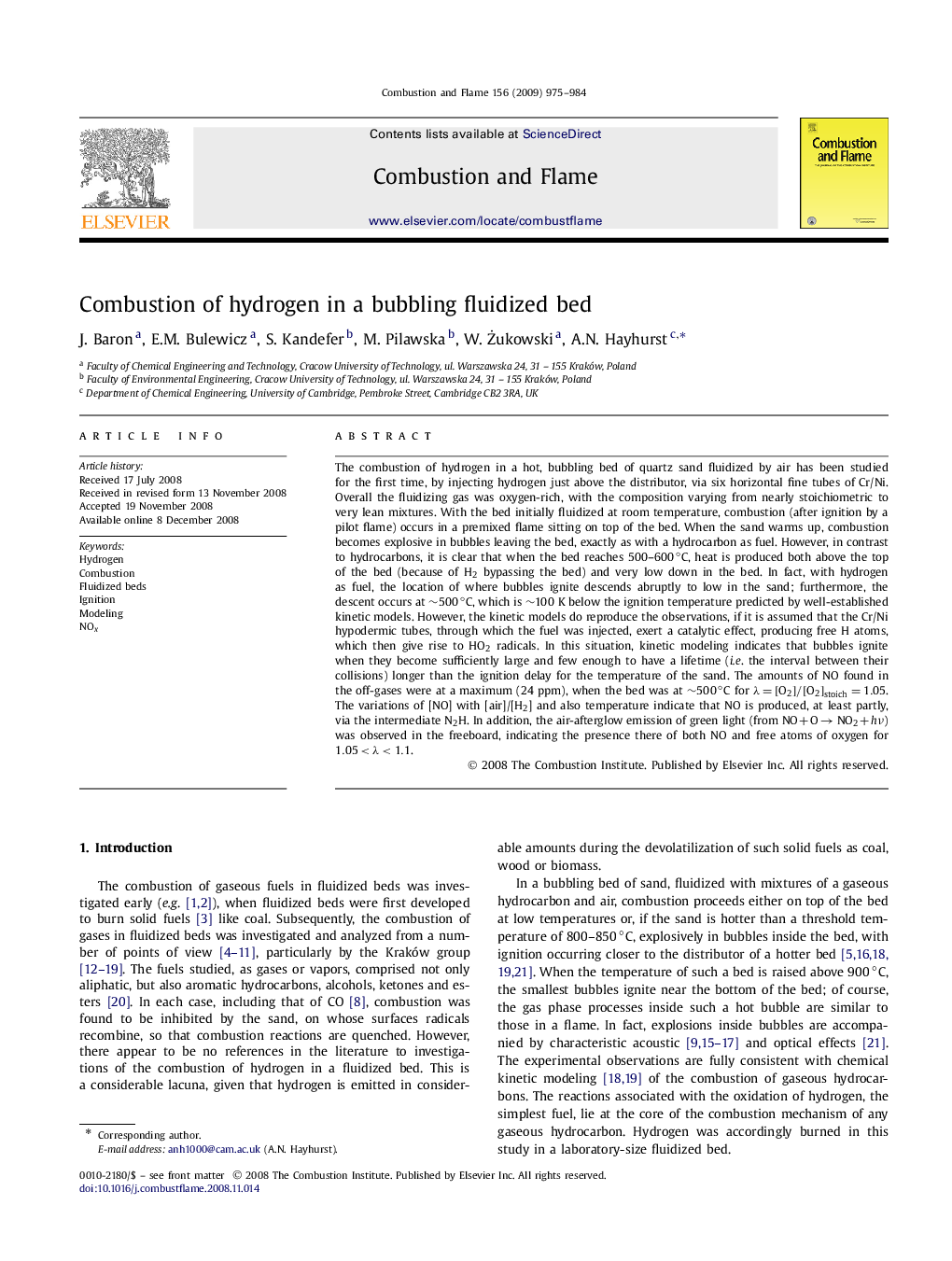| کد مقاله | کد نشریه | سال انتشار | مقاله انگلیسی | نسخه تمام متن |
|---|---|---|---|---|
| 169827 | 458047 | 2009 | 10 صفحه PDF | دانلود رایگان |

The combustion of hydrogen in a hot, bubbling bed of quartz sand fluidized by air has been studied for the first time, by injecting hydrogen just above the distributor, via six horizontal fine tubes of Cr/Ni. Overall the fluidizing gas was oxygen-rich, with the composition varying from nearly stoichiometric to very lean mixtures. With the bed initially fluidized at room temperature, combustion (after ignition by a pilot flame) occurs in a premixed flame sitting on top of the bed. When the sand warms up, combustion becomes explosive in bubbles leaving the bed, exactly as with a hydrocarbon as fuel. However, in contrast to hydrocarbons, it is clear that when the bed reaches 500–600 °C, heat is produced both above the top of the bed (because of H2 bypassing the bed) and very low down in the bed. In fact, with hydrogen as fuel, the location of where bubbles ignite descends abruptly to low in the sand; furthermore, the descent occurs at ∼500 °C, which is ∼100 K below the ignition temperature predicted by well-established kinetic models. However, the kinetic models do reproduce the observations, if it is assumed that the Cr/Ni hypodermic tubes, through which the fuel was injected, exert a catalytic effect, producing free H atoms, which then give rise to HO2 radicals. In this situation, kinetic modeling indicates that bubbles ignite when they become sufficiently large and few enough to have a lifetime (i.e . the interval between their collisions) longer than the ignition delay for the temperature of the sand. The amounts of NO found in the off-gases were at a maximum (24 ppm), when the bed was at ∼500 °C for λ=[O2]/[O2]stoich=1.05λ=[O2]/[O2]stoich=1.05. The variations of [NO] with [air]/[H2] and also temperature indicate that NO is produced, at least partly, via the intermediate N2H. In addition, the air-afterglow emission of green light (from NO+O→NO2+hνNO+O→NO2+hν) was observed in the freeboard, indicating the presence there of both NO and free atoms of oxygen for 1.05<λ<1.11.05<λ<1.1.
Journal: Combustion and Flame - Volume 156, Issue 5, May 2009, Pages 975–984